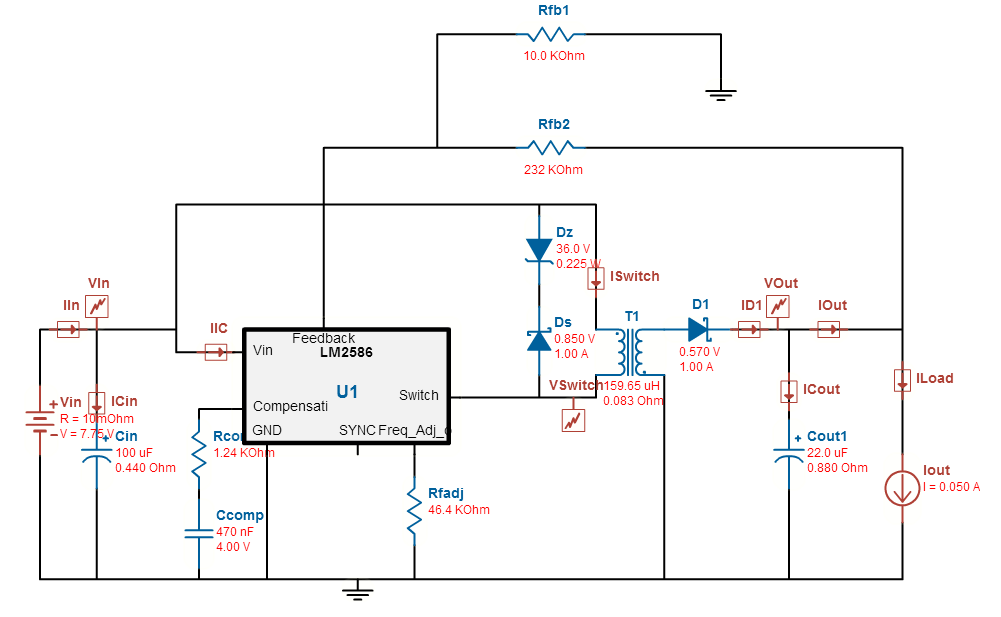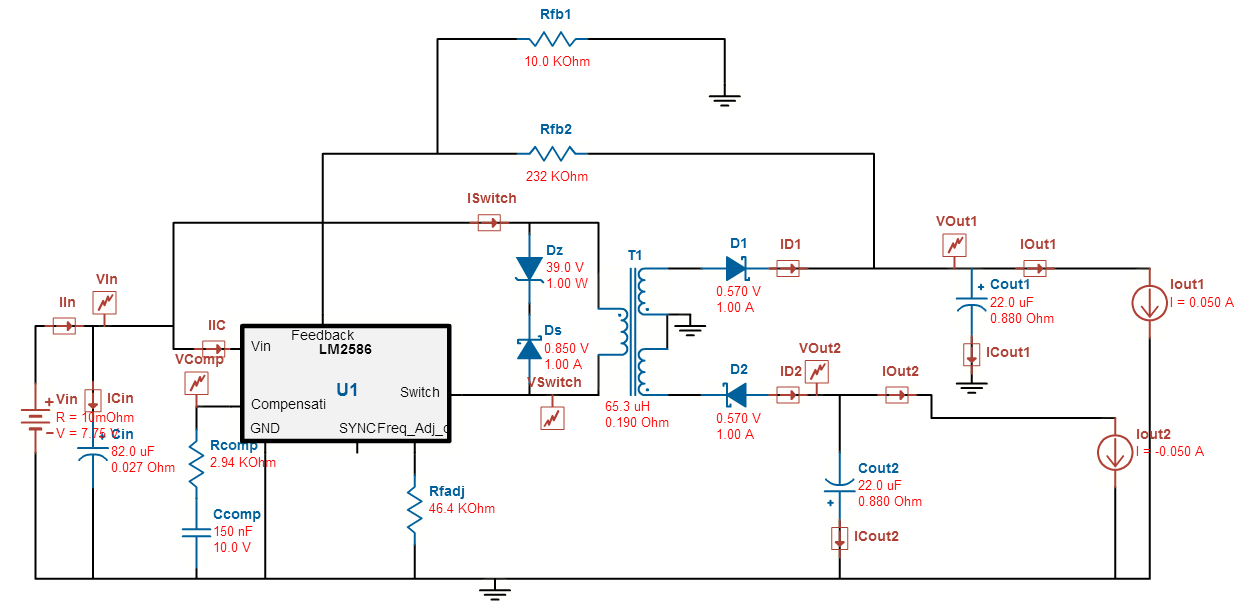Is it possible to modify this flyback converter to get the output voltage somewhere up in the range of +/- 26-60v (preferably 30v or more) without having to make my own transformer? I would also like to use an input range of 6.5-9v. I saw another schematic that did +/- 15v output, but I can't find any standard examples going above that. This will only be driving a 50mA load max. I used the TI WEBENCH software to generate designs, but every thing I tried requires me to build custom inductors.

EDIT: I think I'm getting somewhere with the WEBENCH tool. I told it to generate a solution for a single 30v output and it told me to use this transformer:
http://www.digikey.com/product-detail/en/VPH4-0860-R/513-1542-ND/668203
Here is the schematic:

Then I went back and generated the dual output version that required a custom transformer for some weird reason:

Both transformer configurations are 1:3 so I think all I have to do is add D2 and Cout2 to the single output configuration and I should be good to go, right? The only other issue I can see is the different inductor value they suggested for the dual output version (65uH instead of 160uH). Is that significant or can I just use the 160uH?
